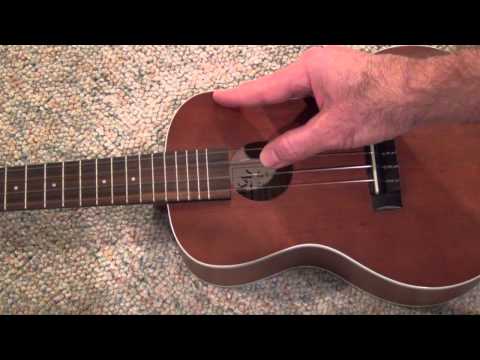Standard ukulele Tuning – gCEA:
The standard tuning for a ukulele is known as “gCEA”. Each letter represents one of the four strings on the ukulele. From top to bottom, the strings are named G, C, E, and A. The top string (G) is the thickest one while the bottom string (A) is the thinnest.
Here’s a step-by-step guide on how to tune your ukulele in gCEA tuning:
1. Use a tuner: The easiest way to tune your ukulele accurately is to use an electronic tuner. You can purchase one from a music store or download tuner apps for your smartphone which work just as well.
2. Start with the G string: Pluck the G string (top string) and observe the tuner’s indicator. If it shows that it’s too flat (lower than G), tighten the tuning peg slowly until it reaches G on the tuner. If it’s too sharp (higher than G), loosen the peg carefully until it matches.
3. Tune the C string: Press down on any fret of the G string while plucking its open note simultaneously with an open C string. Gradually adjust the tension of your C-string’s peg until both notes sound identical.
4. Proceed with E-string: Now that your C-string is in tune, press down on any fret of C-string and pluck it simultaneously with an open E-string till they sound alike. Adjust tension using your E-string’s tuning peg accordingly.
5. Finally, tune the A string: Repeat the process mentioned above by pressing down any fret on your E string while plucking it open at the same time with your A string. Keep adjusting the tension until both strings produce an identical sound.
Once you’ve finished tuning all four strings, go back and double-check each of them, as the process of adjusting one string’s tension can affect the others.
Helpful ukulele Tuning Video:
For those who are more visual learners, watching a ukulele tuning video can be extremely helpful in understanding the process better. If you search for “gCEA ukulele tuning video” on platforms like YouTube, you will find numerous tutorials that guide you through each step visually. These videos often provide a demonstration of how each string should sound when tuned correctly and offer additional tips for beginners.
Remember to practice regularly and check your ukulele’s tuning before every session. The more you play and tune your ukulele, the better you’ll become at recognizing when it’s out of tune. With time and practice, tuning will become second nature to you, ensuring that your music always sounds great!
In conclusion, keeping your ukulele properly tuned is essential to ensure it produces its beautiful sound harmoniously. By following the step-by-step guide above and utilizing a helpful ukulele tuning video in gCEA tuning, you will become a pro at keeping your ukulele in perfect harmony for all your musical endeavors.






